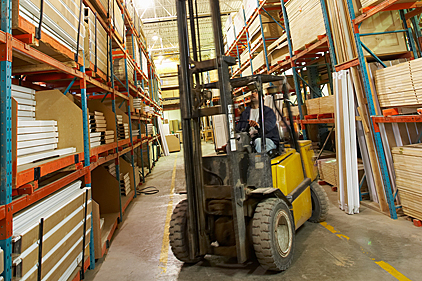Any facility that keeps hazardous chemicals on site must safely store and handle those materials to protect workers, the surrounding community, property and the environment. Potential dangers that could result from the mishandling of hazardous substances include fire, explosion and the release of dangerous chemicals into the environment or toxic materials into the water supply. Hazardous chemicals pose health hazards that range from headaches and skin irritations to chemical burns, cancer and even death.1
Many products are available for the safe storage and containment of hazardous materials, including hazmat storage buildings and cabinets, containment pallets, drums, safety cans and containers, carts, totes and shelves. Choose products that meet applicable regulations and standards, including OSHA, EPA, DOT and NFPA. Following are some other factors to consider regarding the safe storage of hazardous materials, with a focus on selecting storage buildings.
What is a hazardous chemical?
Hazardous chemicals are any substances for which a facility must maintain a Safety Data Sheet (formerly Material Safety Data Sheet) under the OSHA Hazard Communication Standard, which lists the criteria used to identify a hazardous chemical. These detailed information sheets provide data on health hazards and physical hazards of chemicals along with associated protective measures. Over 500,000 products have SDSs which are normally obtained from the chemical manufacturer.2 It is imperative to consult the SDS for any hazardous substances at your facility when deciding how to properly store them.
Prioritizing hazards
Most chemicals have multiple hazards. To determine your storage needs, consider the hazardous properties of a specific chemical and prioritize those hazards as follows:
| Flammability | Flammability characteristics of the material should be the number one consideration. |
| Isolate | If the material will contribute significantly to a fire (e.g., oxidizers), it should be isolated from the flammables. If there were a fire and response to the fire with water would exaggerate the situation, isolate the water reactive material away from contact with water. |
| Corrosivity | Next look at the corrosivity of the material, and store accordingly. |
| Toxicity | Finally, consider the toxicity of the material, with particular attention paid to regulated materials. In some cases, this may mean that certain chemicals will be isolated within a storage area. For example, a material that is an extreme poison but is also flammable, should be locked away in the flammable storage cabinet to protect it against accidental release.3 |
Selecting storage buildings
Chemical storage buildings are designed to safely house hazardous materials and prevent them from leaking into the environment in the event of a spill. Secondary containment is what distinguishes chemical storage buildings from other storage buildings. A sump — usually a 6- to 7-inch deep steel well at the bottom of the storage building — collects any liquids. The sump is generally covered by a steel or fiberglass floor grating that is often equipped with a “sump line” of a plastic nature to catch accidental spills.4 Here are some factors to consider when choosing a chemical storage building:
Fire-rating: Both fire-rated and non-fire-rated steel buildings are available for chemical storage. In order to decide which type of building you’ll need, materials must be identified and grouped by hazard. In addition to the Safety Data Sheet, your local fire marshal is a good resource. The location of the building is one factor that affects the need for a fire-rated building. If you are storing flammable and combustibles in a building that will be located 75 feet or more from an occupied building, a fire-rated building may not be required. Again, check with your local fire marshal. 4
Size: The number and size of the containers to be stored will help determine your building size. Regulations limiting the stacking of containers will affect the amount of floor space required. 4
Active storage vs. inactive storage: How a building will be used will affect the need for a fire-rated structure as well as other features such as mechanical ventilation or explosion-relief panels. For instance, will the structure be permanent or temporary? Will you frequently move materials in and out of the building? Will chemicals be handled inside of the building? 4
Construction features: Consult local codes, standards and regulations during the selection of building features. Chemicals classified as 1-A Flammable by the National Fire Protection Association, for example, may require mechanical venting, explosion relief panels and alarms. 4
References
1 Reliable Plant, http://www.reliableplant.com/Read/235/hazardous-materials-storage
2 U.S. Environmental Protection Agency (EPA), Emergency Management, http://www.epa.gov/emergencies/content/epcra/epcra_storage.htm
3 UCLA, Chemical Safety Storage Guidelines, http://map.ais.ucla.edu/portal/site/UCLA/menuitem.789d0eb6c76e7ef0d66b02ddf848344a/?vgnextoid=a73414bb06af1110VgnVCM200000ddd76180RCRD
4 U.S. Chemical Storage, FAQ – Safe and Secure Storage of Hazardous Materials, http://uschemicalstorage.com/faq.html




